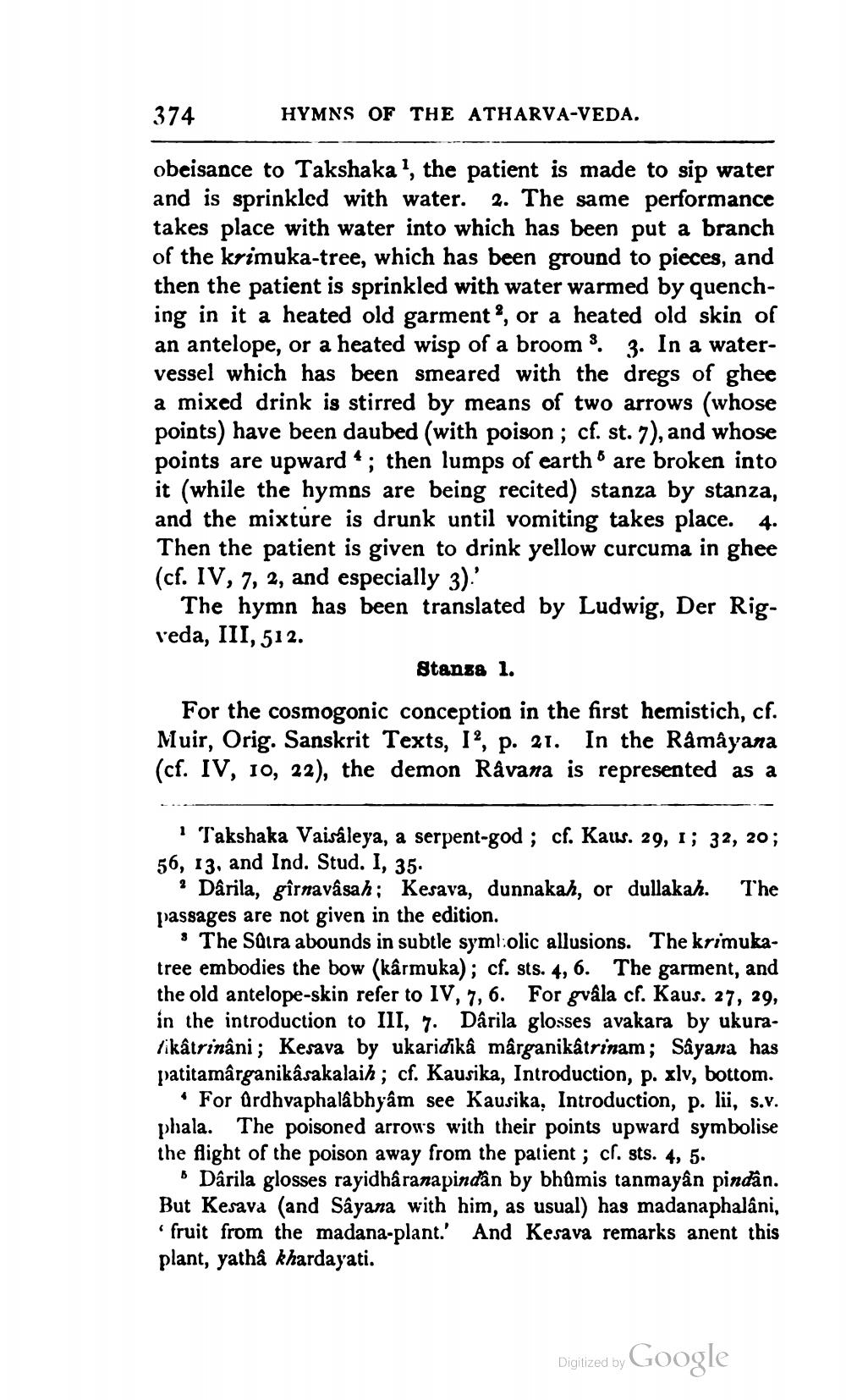________________
374
HYMNS OF THE ATHARVA-VEDA.
obeisance to Takshaka', the patient is made to sip water and is sprinkled with water. 2. The same performance takes place with water into which has been put a branch of the krimuka-tree, which has been ground to pieces, and then the patient is sprinkled with water warmed by quenching in it a heated old garment, or a heated old skin of an antelope, or a heated wisp of a brooms 3. In a watervessel which has been smeared with the dregs of ghee a mixed drink is stirred by means of two arrows (whose points) have been daubed (with poison ; cf. st. 7), and whose points are upward * ; then lumps of earth are broken into it (while the hymns are being recited) stanza by stanza, and the mixture is drunk until vomiting takes place. 4. Then the patient is given to drink yellow curcuma in ghee (cf. IV, 7, 2, and especially 3).'
The hymn has been translated by Ludwig, Der Rigveda, III, 512.
Stanse 1. For the cosmogonic conception in the first hemistich, cf. Muir, Orig. Sanskrit Texts, 12, p. 21. In the Ramayana (cf. IV, 10, 22), the demon Råvana is represented as a
| Takshaka Vaisâleya, a serpent-god ; cf. Kaus. 29, 1; 32, 20; 56, 13, and Ind. Stud. I, 35.
? Darila, gîrnavâsah; Kesava, dunnakah, or dullakah. The passages are not given in the edition.
The Salra abounds in subtle syml:olic allusions. The krimukatree embodies the bow (kârmuka); cf. sts. 4, 6. The garment, and the old antelope-skin refer to IV, 7,6. For gvála cf. Kaus. 27, 29, in the introduction to III, 7. Darila glosses avakara by ukuralikâtrinâni; Kesava by ukaridikâ mârganikâtrinam; Sâyana has patitamârganikâsakalaih; cf. Kausika, Introduction, p. xlv, bottom.
For ürdhvaphalabhyâm see Kausika, Introduction, p. lii, s.v. phala. The poisoned arrow's with their points upward symbolise the flight of the poison away from the patient ; cf. sts. 4, 5.
Darila glosses rayidharanapindân by bhūmis tanmayân pindân. But Kesava (and Sâyana with him, as usual) has madanaphalani, 'fruit from the madana-plant.' And Kesava remarks anent this plant, yathả khardayati.
Digitized by
Digjized by Google




